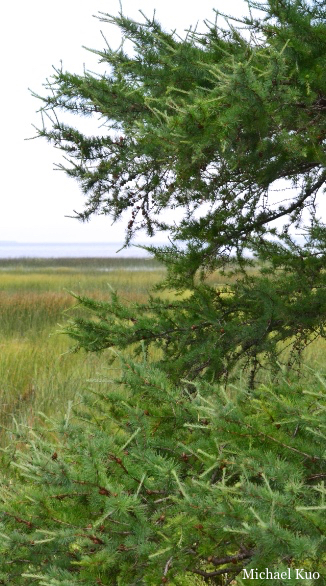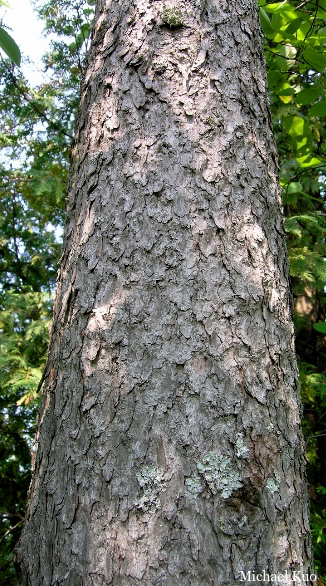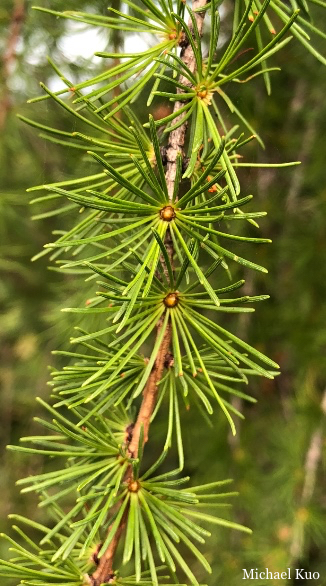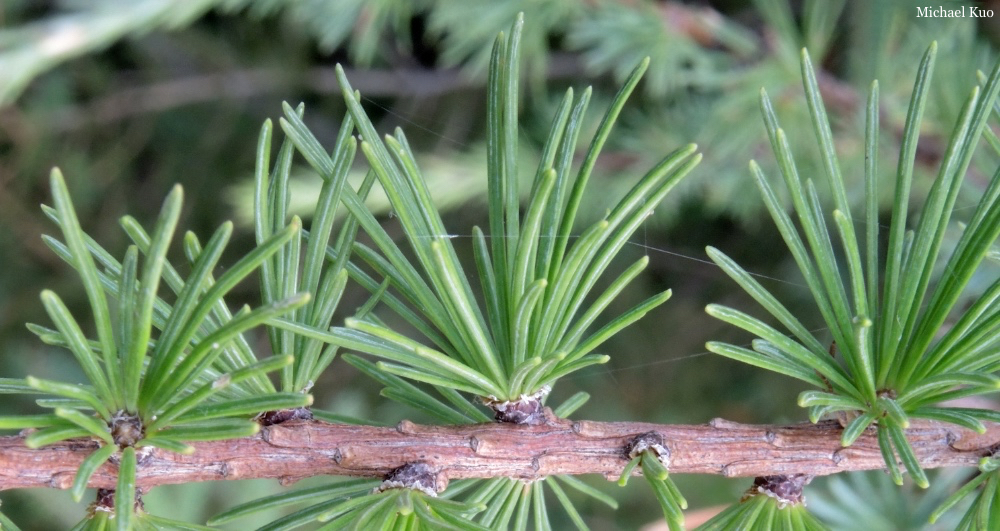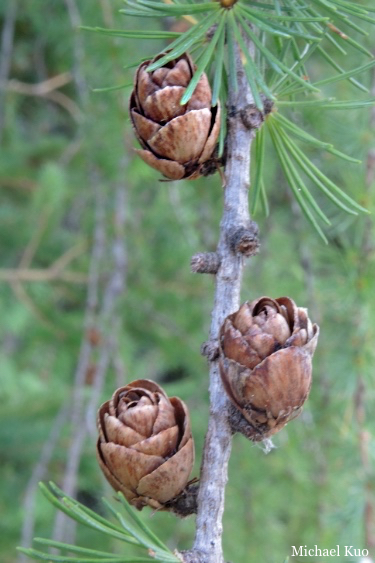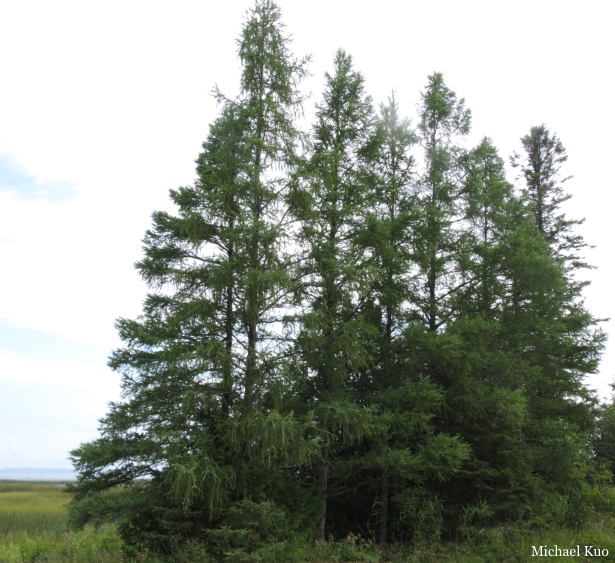 Larix laricina (tamarack, eastern larch) |
|
Tamarack, also known as eastern larch, is a conifer of swampy boreal ecosystems, best recognized by its needles, which emerge in clusters from little branch spurs. Unlike most conifers, tamarack is deciduous, shedding its needles in the fall; tamarack bogs look decidedly dreary and "dead" in the winter. European larch (Larix decidua) is sometimes cultivated in North America and can be found in urban settings throughout the Midwest (it also occasionally escapes cultivation). It is a taller than tamarack, reaching 140 feet in height, and its cones and needles are about 150% larger. |
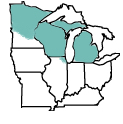 midwestern range |
|
|
|
|
|
|
|
|
|
|
